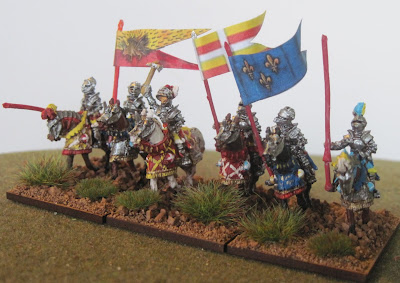It is of interest to note that alongside the rise of firepower the humble javelin or dart still had its place on the battle field. It was, as it always had been, an effective man killer.
There was a codicil, the user had to be brave, strong and skilled to achieve the desired effect.
Archery too required a considerable amount of training and physical ability, even with the windlass crossbow, to produce an effective archer.
The arquebus required neither great strength or exceptional courage. Although of course there was skill and it did make a difference. That said, the arquebusier did not need extensive training. The basics were easily picked up and with some practice he was good to go. Nor was he a finite resource , most men were perfectly acceptable potential arquebusiers.
The investment was required in the technology rather than the man. Fire arms were expensive and needed to be well maintained. Likewise good gunpowder required expert manufacture, it had to be kept carefully and was used up quickly. Crucially, it could defeat even the best armour. It was a revolutionary technology.
Some of our period protagonists were swift to embrace this new technology. Others were less so. In either case there was a transitional period. French armies had a significant artillery component alongside numerous cross bow men. The Spanish Colunella was effectively a protected missile delivery system, The Spanish got fire power early. The others were not far behind.
I envisage French crossbow men operating in swarms swift in advance or retreat. Of course dense blocks of pike men made very good targets and had to be screened by their own loose order missile men. Pike men couldn’t stand too long under skirmish fire.
Effective skirmishing required a great deal of good order and management. That might not always be available. Even when present such men were always vulnerable to any type of cavalry.
Part of the charm of the Great Italian Wars is that the old and the new existed side by side and the new was still a work in progress.
Accordingly, I’ve made artillery potentially devastating. Arquebusiers are more effective against armoured men and yet remain vulnerable to all other troop types. It’s a balance.
As Gonzalo is a Card driven game each unit needs to be readily identifiable when their card comes up. As in life the swiftest method is a distinctive flag. I found that there are many units but too few distinctive flags available.
To help this I’ve made a couple of St. Martin flags for the French. Saint Martin was popular with the French common soldiery. Presumably due to his having been a soldier and his kindness to the destitute. They understood destitution and soldiering. He was a real person and an interesting one if you are inclined to study the Migration Period of Late Roman history.
As a final thought I may introduce a Master Gunner Card. Coming up next- a game of Gonzalo.













